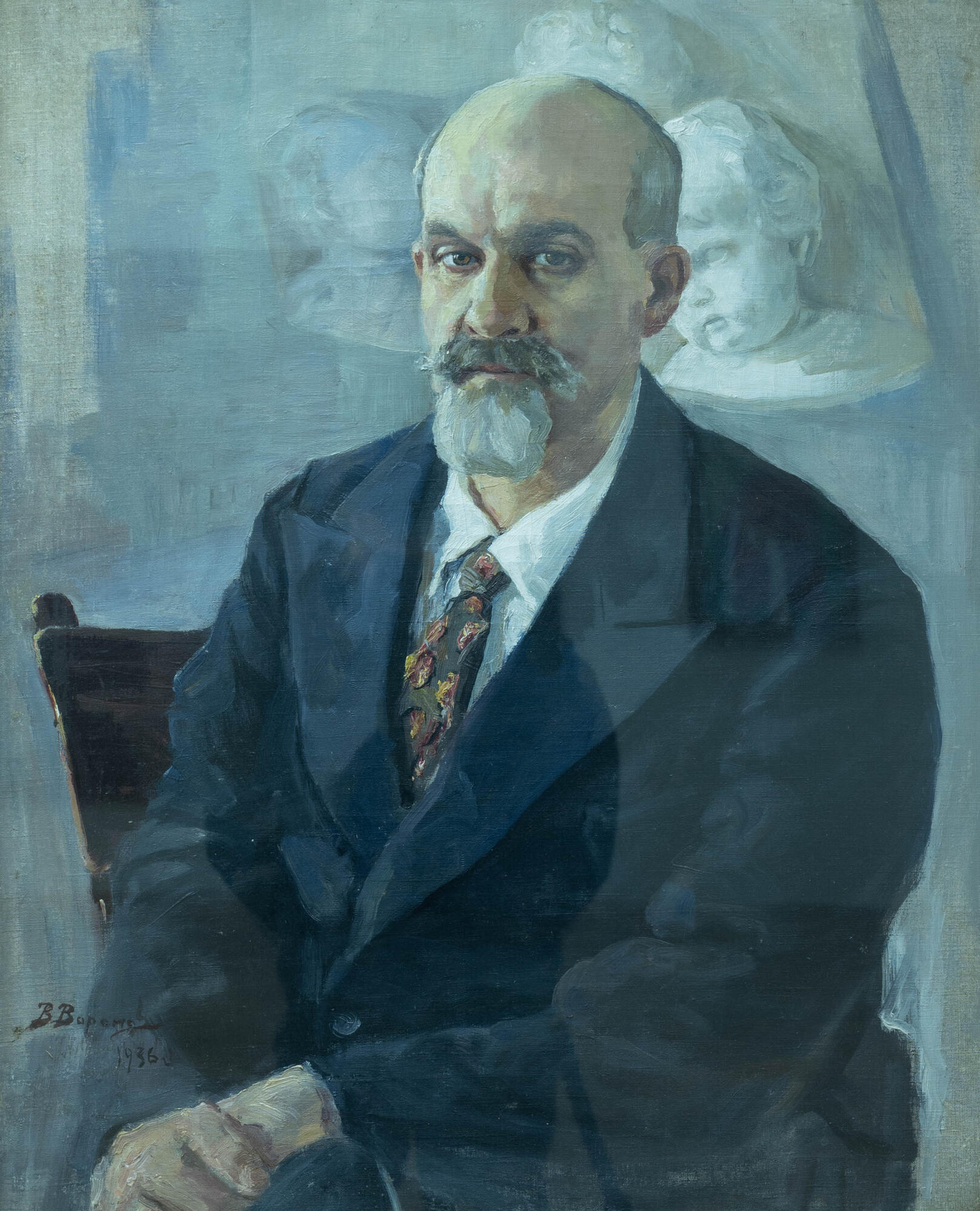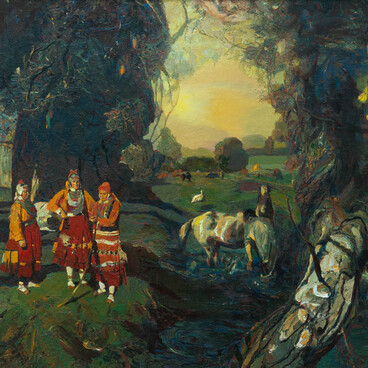The portrait on display was created by the painter Vasily Dmitriyevich Voronov. He was born in 1879 in the village of Studenets, Alatyr district, and studied at the Kazan Art School. In 1904, he was recommended for further studies at the painting department of the Higher Art School at the Imperial Academy of Arts, where his mentor was Jan Frantsevich Ciągliński. From 1936 to 1940, he taught painting and drawing at the Alatyr Art and Engraving College. By that time, Voronov was already an experienced master and realized the importance of not only the school itself but also its founder Fyodor Semyonovich Bykov.
Fyodor Bykov was a graphic artist and an art teacher. Born in 1885 in the village of Kuvakino, Alatyr district of Chuvashia, he graduated from the drawing classes of the Stroganov School of Industrial Art in Moscow and the engraving workshop of I.A. Anofriyev. Bykov worked as an engraver in the publishing houses of Moscow and Kazan. During the First World War, he was a draftsman and photographer at the Izhevsk arms factory. He taught engraving in cultural and educational organizations and the art and theater school in Kazan. In 1932, the artist settled in Alatyr and worked as an engraver in regional newspapers, while keeping his cooperation with central publishing houses.
The rapid growth of publishing in Chuvashia required the training of qualified graphic artists. Therefore, in 1934, the Alatyr Art and Engraving School was opened. The organization and management of the school were entrusted to Fyodor Bykov. In 1936, the school was transformed into an art and engraving college.
Initially, the school was focused on training engravers for Chuvashgiz and local printing houses, but then its profile was expanded through the training of fine art teachers for the republic’s schools. In addition to Bykov and Voronov, during the Alatyr period, the teaching staff of the college included Alexey Mikhailovich Tagayev-Surban, Alexander Fyodorovich Myasnikov, Ivan Trofimovich Grigoryev, and Nikolay Alexandrovich Kamenshchikov. Among the first students were artists who subsequently had a great influence on the development of fine arts in Chuvashia: Nikolay Vasilyevich Ovchinnikov, Pyotr Vladimirovich Sizov, and Rozalia Mikhailovna Yermolayeva. At the end of 1940, the school was transformed into the Chuvash State School of Arts, and its engraving department dissolved. During the Great Patriotic War, with many students and teachers off at the front, the school was closed and did not reopen until 1944.
Fyodor Bykov was a graphic artist and an art teacher. Born in 1885 in the village of Kuvakino, Alatyr district of Chuvashia, he graduated from the drawing classes of the Stroganov School of Industrial Art in Moscow and the engraving workshop of I.A. Anofriyev. Bykov worked as an engraver in the publishing houses of Moscow and Kazan. During the First World War, he was a draftsman and photographer at the Izhevsk arms factory. He taught engraving in cultural and educational organizations and the art and theater school in Kazan. In 1932, the artist settled in Alatyr and worked as an engraver in regional newspapers, while keeping his cooperation with central publishing houses.
The rapid growth of publishing in Chuvashia required the training of qualified graphic artists. Therefore, in 1934, the Alatyr Art and Engraving School was opened. The organization and management of the school were entrusted to Fyodor Bykov. In 1936, the school was transformed into an art and engraving college.
Initially, the school was focused on training engravers for Chuvashgiz and local printing houses, but then its profile was expanded through the training of fine art teachers for the republic’s schools. In addition to Bykov and Voronov, during the Alatyr period, the teaching staff of the college included Alexey Mikhailovich Tagayev-Surban, Alexander Fyodorovich Myasnikov, Ivan Trofimovich Grigoryev, and Nikolay Alexandrovich Kamenshchikov. Among the first students were artists who subsequently had a great influence on the development of fine arts in Chuvashia: Nikolay Vasilyevich Ovchinnikov, Pyotr Vladimirovich Sizov, and Rozalia Mikhailovna Yermolayeva. At the end of 1940, the school was transformed into the Chuvash State School of Arts, and its engraving department dissolved. During the Great Patriotic War, with many students and teachers off at the front, the school was closed and did not reopen until 1944.



